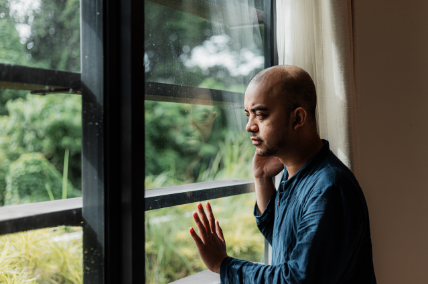Over 40 million adults in the United States are affected by anxiety, making Anxiety Disorders the most common mental illness in the country. This condition is developed from risk factors, such as life events, personality, genetics, and brain chemistry. The good news is that anxiety disorders are very treatable.
What is an Anxiety Disorder?
Most people experience anxiety at some level ranging from day-to-day stresses to major life events. Some examples include preparing for a presentation in front of a group of people, planning a wedding, and moving to a new city. All of these life events may cause some form of anxiety. Though, this type of anxiety comes and goes, whereas those with an anxiety disorder live with a feeling of intense or even debilitating anxiety on a daily basis.
An anxiety disorder may preclude you from doing basic everyday tasks and things that you love. You may not want to drive a car, let alone leave your home in more extreme cases.
Types of Anxiety Disorders
Anxiety is a key part of several disorders, including Panic Disorder, Phobia, Separation Anxiety Disorder, Obsessive-Compulsive Disorder, Social Anxiety Disorder, and Illness Anxiety Disorder. Each one of these disorders includes anxiety but varies in terms of specific symptoms and causes. For example, Social Anxiety Disorder is caused by the idea of a social outing or event, or physically being in a social situation. Those with this specific type of anxiety disorder may feel intense anxiety just from everyday social interactions.
The Upper Cervical Spine Can Affect Anxiety Disorders
The central nervous system is heavily reliant on spinal alignment and when there is a misalignment, it sets the system awry, potentially causing a multitude of symptoms and even ailments. One of the conditions that may arise due to upper cervical spinal misalignment is Anxiety Disorder. When left untreated, the misaligned spine can cause inflammation, which in turn causes the central nervous system to not function properly; therefore, it releases neurotransmitters irregularly, such as dopamine, serotonin, and norepinephrine. When functioning properly, they would curb Anxiety Disorder symptoms.
How Can The Blair Technique Treat Anxiety Disorders?
The Blair Technique was developed by Dr. William Blair in 1961 and it is now practiced by specially trained chiropractors throughout the country. This technique redefined chiropractic with its gentle, precise, and effective treatment.
During your first appointment, the Blair Chiropractic practitioner will provide an initial assessment by utilizing advanced diagnostic tools. Once the upper cervical chiropractor has diagnosed the condition of your upper cervical spine, they will then apply the Blair Chiropractic Technique. This technique specifically uses a very gentle and precise movement in order to achieve the most effective outcome of realigning your upper cervical spine. And, this should alleviate some of the symptoms that you experience from your Anxiety Disorder.
If your Anxiety Disorder is getting in the way of living a fulfilled life, you can make an appointment with one of our Blair chiropractors by going to the Find A Blair Chiropractor section on our website.
